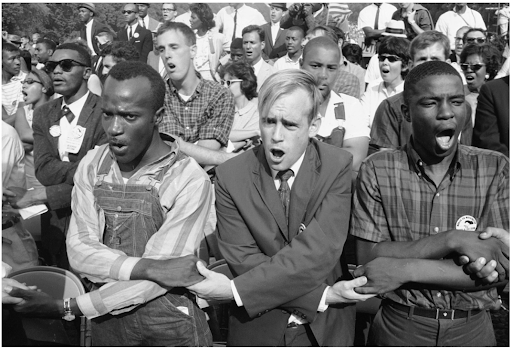Martin Luther King & the March on Washington, 1963 (Edexcel GCSE History): Revision Note
Exam code: 1HI0
Summary
The March on Washington on 28 August 1963, is seen by many as the defining moment of the civil rights struggle. Vast crowds heard Martin Luther King give a rousing speech in which he outlined his future vision of an America with no segregation. The "I Have a Dream" speech, was delivered from the steps of the Lincoln Memorial. King’s powerful words moved millions of Americans, calling for an end to racial injustice and looking to a future where people would be “judged by the content of their character rather than the colour of their skin”.
The march was seen by people all over the world and became an inspiration for those fighting inequality and racism everywhere. It demonstrated the power of peaceful protest and collective action in effecting social change, leaving a lasting legacy in the ongoing fight for civil rights.
What caused the march on Washington?
1963 marked the 100th anniversary (centenary) of the ending of slavery in the United States
To mark the event, a march on the nation’s capital, Washington D.C. was suggested by Phillip Randolph, the leader of the Brotherhood of Sleeping Car Porters
Randolph argued that a large protest in front of key government buildings, in the capital city, would attract enormous publicity
The major civil rights campaigning groups, the NAACP, CORE, SNCC and the SCLC all agreed to take part
The protest was to be non-violent and demand that the government pass a new civil rights bill
The ‘I have a dream’ speech
On 28 August 1963, around 250,000 demonstrators assembled in central Washington D.C.
Their numbers were far higher than the organisers had expected
Many had travelled from all across the USA
Protest singers, including Bob Dylan, sang to the enormous crowd before several speeches were given
Martin Luther King was the final speaker of the day and the words he spoke have gone down in history as the ‘I Have a Dream’ speech

Examiner Tips and Tricks
Writing Dr Martin Luther King in your exam every time you want to reference the famous civil rights leader will take up valuable time. Time you can’t afford to lose. It is acceptable to refer to him as King or Dr King. Or, if you put MLK in brackets after the first time you write Martin Luther King, you can refer to him as MLK for the rest of your answer.
Impacts of the march on Washington
Why the march was significant | Impact |
|---|---|
Crowd size | The sight of 250,000 people, of whom 40,000 were White, gathered at the nation’s seat of government was powerful and awe-inspiring. It demonstrated both the amount of support and the strength of feeling of the protestors |
Media attention | A gathering of that size, accompanied by celebrities such as Bob Dylan and campaigners such as Martin Luther King ensured the eyes of the world were on the protest |
‘I Have a Dream’ Speech | King’s skill at public speaking and his references to the Bible and the American Declaration of Independence ensured it was both memorable and appealed to a large section of American society |
Worked Example
Give two things you can infer from Source A about the March on Washington (1963).
Source A: A photograph of people taking part in the March on Washington (1963)  |
(4 marks)
Answer
What I can infer: That the march was supported by both Black and White people.
Details in the source that tells me this:Black and White people can be clearly seen participating in the march
What I can infer: The march was supported by people of different economic backgrounds
Details in the source that tells me this:
Some of the marchers are wearing suits and others are wearing the clothes of labourers and manual workers

Unlock more, it's free!
Did this page help you?